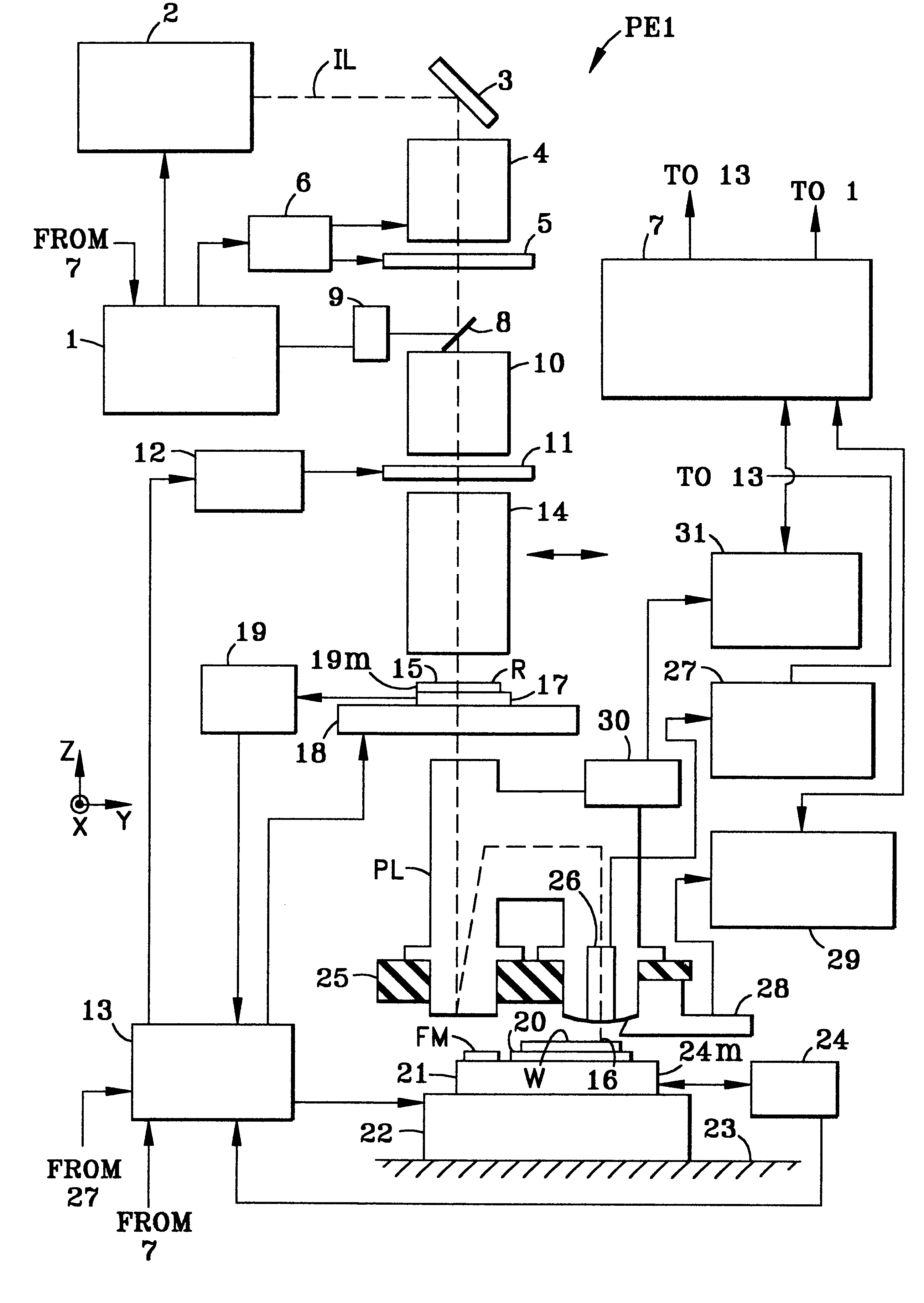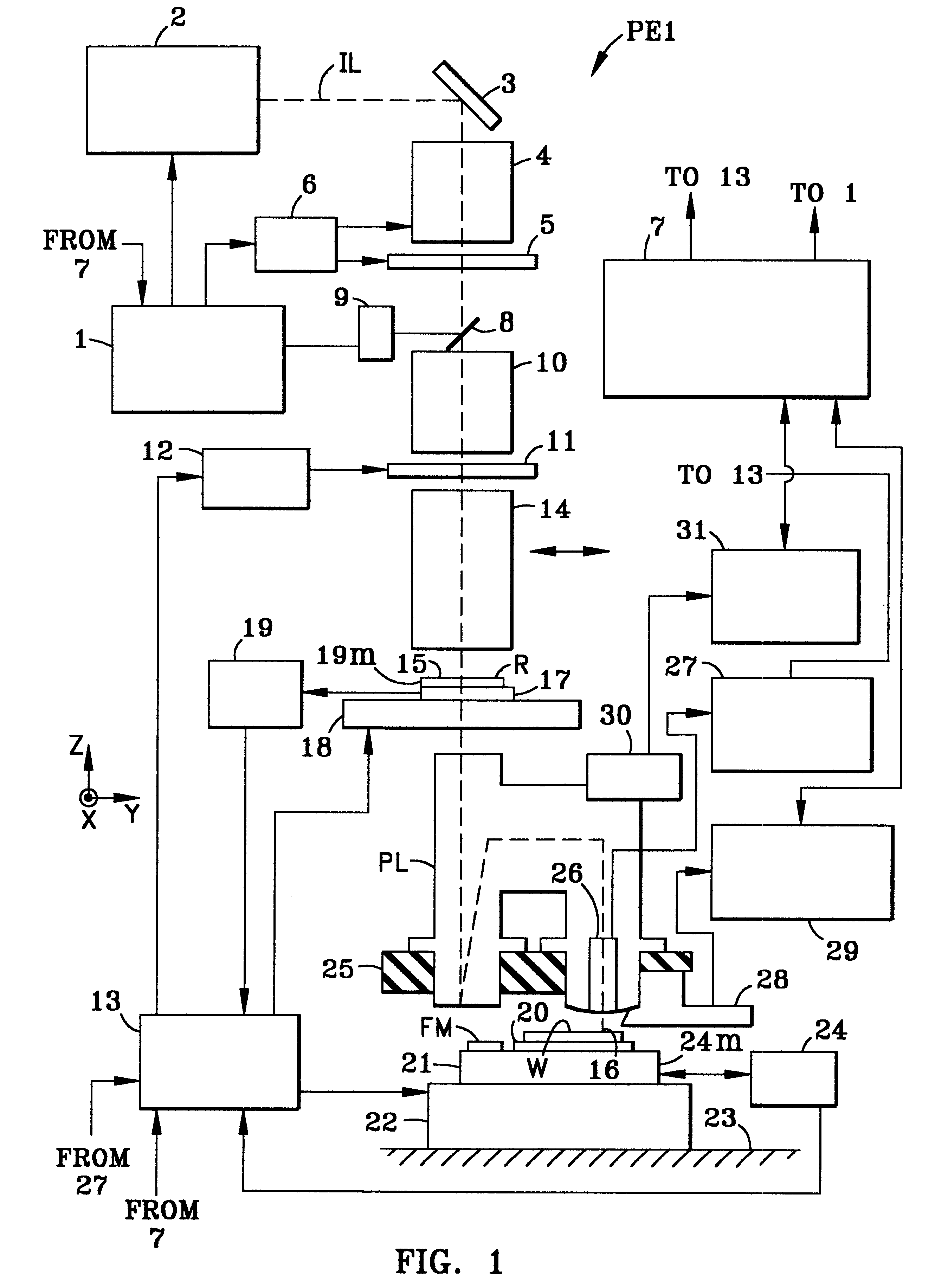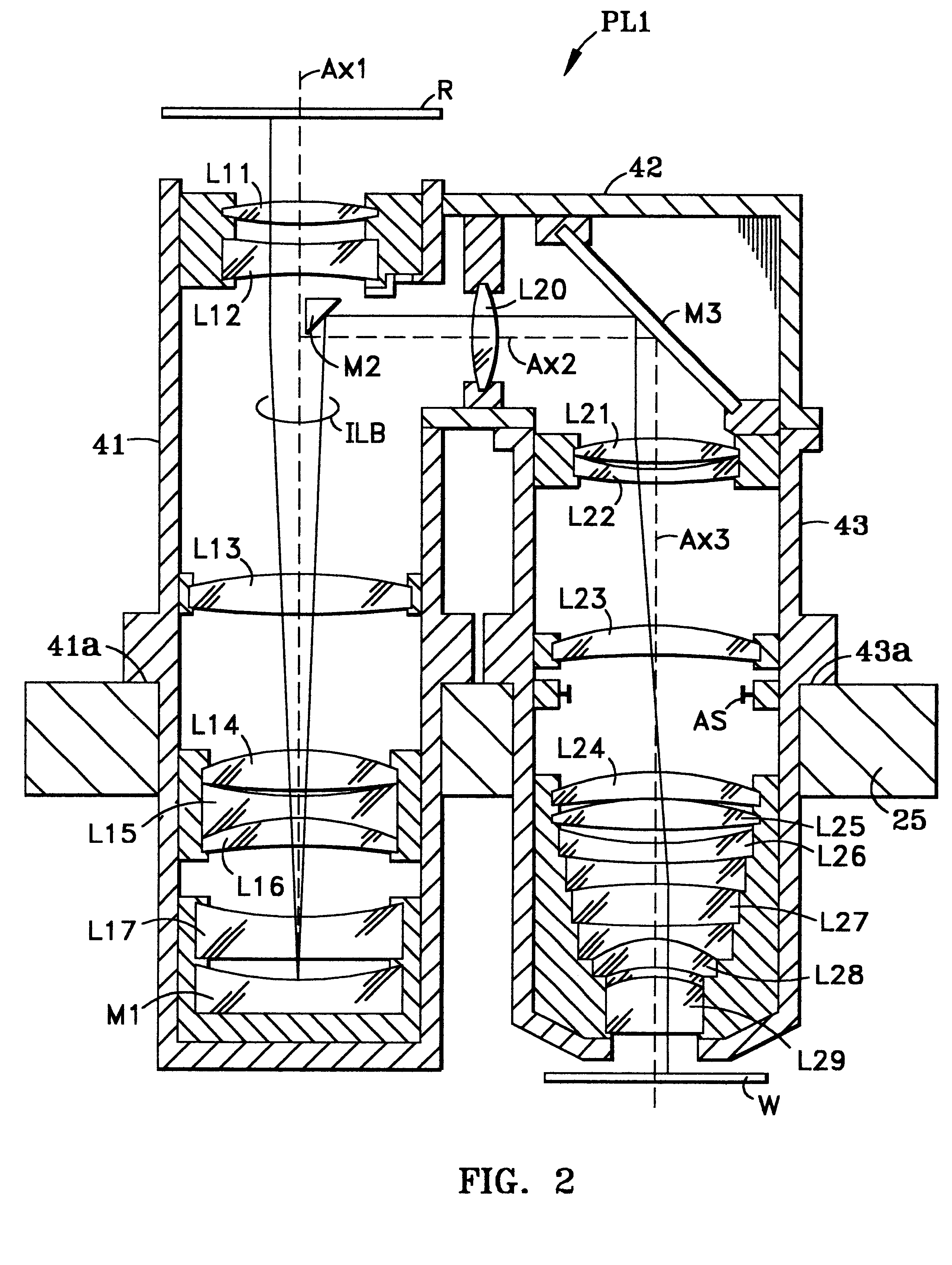Exposure apparatus and method
a technology of exposure apparatus and a surface, applied in the field of exposure apparatus and a method, can solve the problems of increasing the absorption of light, reducing the transmittance in this wavelength region, and changing the shape of the surface of the optical member
- Summary
- Abstract
- Description
- Claims
- Application Information
AI Technical Summary
Problems solved by technology
Method used
Image
Examples
working example 1
FIG. 5 is a schematic optical diagram of the projection optical system according to Working Example 1. Projection optical system PL1 of Working Example 1 is optimized for an exposure energy beam having wavelength .lambda.=193.40 nm and a wavelength width (FWHM) of .+-.0.01 nm (.+-.10 pm).
With reference to FIG. 5, projection optical system PL1 is provided with a first imaging system PLa that includes concave mirror M1 and that forms an intermediate image of reticle R, a second imaging system PLb that reimages this intermediate image onto wafer W with a predetermined reduction magnification, and folding mirror M2 arranged between first imaging system PLa and second imaging system PLb. Furthermore, although there is only one folding mirror in projection optical system PL1, a folding mirror may also be provided in second imaging system PLb, as shown in FIG. 2.
First imaging system PLa has first lens group G1 arranged most reticle-wise, second lens group G2 and concave mirror M1. Lens gro...
working example 2
FIG. 7 is a schematic optical diagram of a projection optical system PL2 according to Working Example 2. Projection optical system PL2 of Working Example 2 is optimized for an exposure energy beam having wavelength .lambda.=193.40 nm and a wavelength width (FWHM) of .+-.0.01 nm (.+-.10 pm).
Unlike the projection optical system PL1 according to Working Example 1 in FIG. 5, projection optical system PL2 does not form an intermediate image. Rather, projection optical system PL2 has a first lens group G1 with positive refractive power, beam splitter BS, second lens group G2 that includes concave mirror M1, and third lens group G3 having positive refractive power. Projection optical system PL2 does not have a folding mirror. However, a folding mirror may be provided in first lens group G1 to make the arrangement of reticle R and wafer W parallel. In addition, either a half mirror (half prism) that divides the amplitude or a polarizing beam splitter that separates polarized light can be us...
working example 3
FIG. 9 is a schematic optical diagram of a projection optical system PL3 according to Working Example 3. Projection optical system PL3 is optimized for an exposure energy beam having wavelength .lambda.=193.40 nm and a wavelength width (FWHM) of .+-.0.01 nm (.+-.10 pm).
In FIG. 9, projection optical system PL3 is provided with first imaging system PLa, second imaging system PLb, and folding mirror M2, the same as Working Example 1. Furthermore, a folding mirror may also be provided in second imaging system PLb.
As in Working Example 1, first imaging system PLa according to Working Example 3 has first lens group G1 arranged most on the reticle R side, and second lens group G2 and concave mirror M1. Lens groups G1 and G2 and the concave mirror are positioned so that the exposure energy beam that travels from the illumination optical system via reticle R passes sequentially through first lens group G1 and second lens group G2 and reaches concave mirror M1, and so that the exposure energy...
PUM
 Login to View More
Login to View More Abstract
Description
Claims
Application Information
 Login to View More
Login to View More - R&D
- Intellectual Property
- Life Sciences
- Materials
- Tech Scout
- Unparalleled Data Quality
- Higher Quality Content
- 60% Fewer Hallucinations
Browse by: Latest US Patents, China's latest patents, Technical Efficacy Thesaurus, Application Domain, Technology Topic, Popular Technical Reports.
© 2025 PatSnap. All rights reserved.Legal|Privacy policy|Modern Slavery Act Transparency Statement|Sitemap|About US| Contact US: help@patsnap.com



